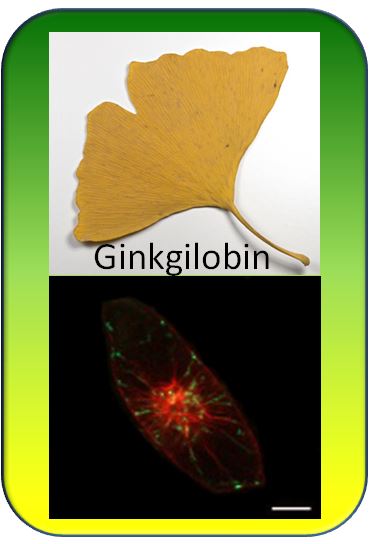2015_08: New Tools from an Ancient Tree
What is the topic?
Genetic engineering allows to manipulate plants in multiple ways. However, this will only address entire cells - in order to study cellular "direction", we need tools that allow to generate gradients across the cell. For this reason, we work on chemical engineering for plant cells. Of special interest are peptides, because they can be tailored for specific targets in the cell. But how to get peptides across cell wall and cell membrane into the interior of the cell in a non-destructive way?
Where are we?
In collaboration with the team of Prof. Dr. Anne Ulrich (KIT Campus North, Institute for Biological Interfaces) we developed „Trojan Horses“ that can penetrate into plant cells and deliver cargoes. Our focus is on the actin cytoskeleton ("the muscles of plant cells"), because this not only allows to manipulate cellular direction, but also to activate the immune system of the plant. In a previous work (Eggenberger et al. 2011), we succeeded to introduce a short peptides named Lifeact that in fact targeted its cargoe (a fluorescent dye) to actin filaments. In the current work, we go one step further and introduced a short fragment of the protein ginkgilobin and demonstrate that we can "persuade" the target cell to commit suicide. This sounds a bit odd and one might ask for the benefit of this strategy.
What is behind?
The protein ginkgilobin originates from the living fossile Ginkgo biloba, the Maidenhair Tree. Already Goethe wrote a poem on this peculiar tree in his West-Eastern Divan. The Ginkgo Tree stands between the Ferns and the Seed Plants and was widely distributed all over our planet some 200 million years ago. But only few residual forests survived in the South of China. As park tree it is quite popular, though and its two-lobed leaves (that is the meaning of the Latin biloba) inspired Goethe to write his poem that deals with the polarity of genders. The "fruits" smell quite unpleasantly of butyric acid and are in reality non-fertilised ovules - they are fertilised usually several months after fruit shed and this leads to the question, how the egg cell can protect its precious nutrients against a completely rotten and stinking environment, without taking harm. This is now the point, where gingkilobin acts - this protein efficiently can ward off microbes. To understand this, we first cloned the gene for ginkgilobin from the ovules, coupled it to a gen encoding a fluorescent jellyfish protein and introduced the conjugate into tobacco cells. We found that the encoded protein labelled actin filaments. By excising specific parts of the gene, we could pin down, which part of the protein mediates the binding to actin. For this so called A-domain, our partners at IBG generated a tandem of the "Trojan" BP100 and the A-domain of ginkgilobin. This tandem was readily penetrating into the plant cells and bound to actin. However, then something strange happend - the actin filaments contracted - an important signal for programmed cell death (the plant version of animal apoptosis), an efficient strategy to kill intruding pathogens. So, by using the ginkgilobin-Trojan, we were able to induce programmed cell death in our tobacco cells.
Thus, for the first time, we could manipulate plant cells in a targeted manner using an artificially designed Trojan Peptide. In the future, we want to investigate, whether this strategy can be employed for novel ways of biological plant protection.
Publications
82. Eggenberger K, Mink C, Wadhwani P, Ulrich AS, Nick P (2011) Using the peptide BP100 as a cell penetrating tool for chemical engineering of actin filaments within living plant cells. ChemBioChem 12, 132-137 - pdf
118. Gao N, Wadhwani P, Mühlhäuser P, Liu Q, Riemann M, Ulrich A, Nick P (2015) An antifungal protein from Ginkgo biloba binds actin and can trigger cell death. Protoplasma, DOI 10.1007/s00709-015-0876-4 - pdf

